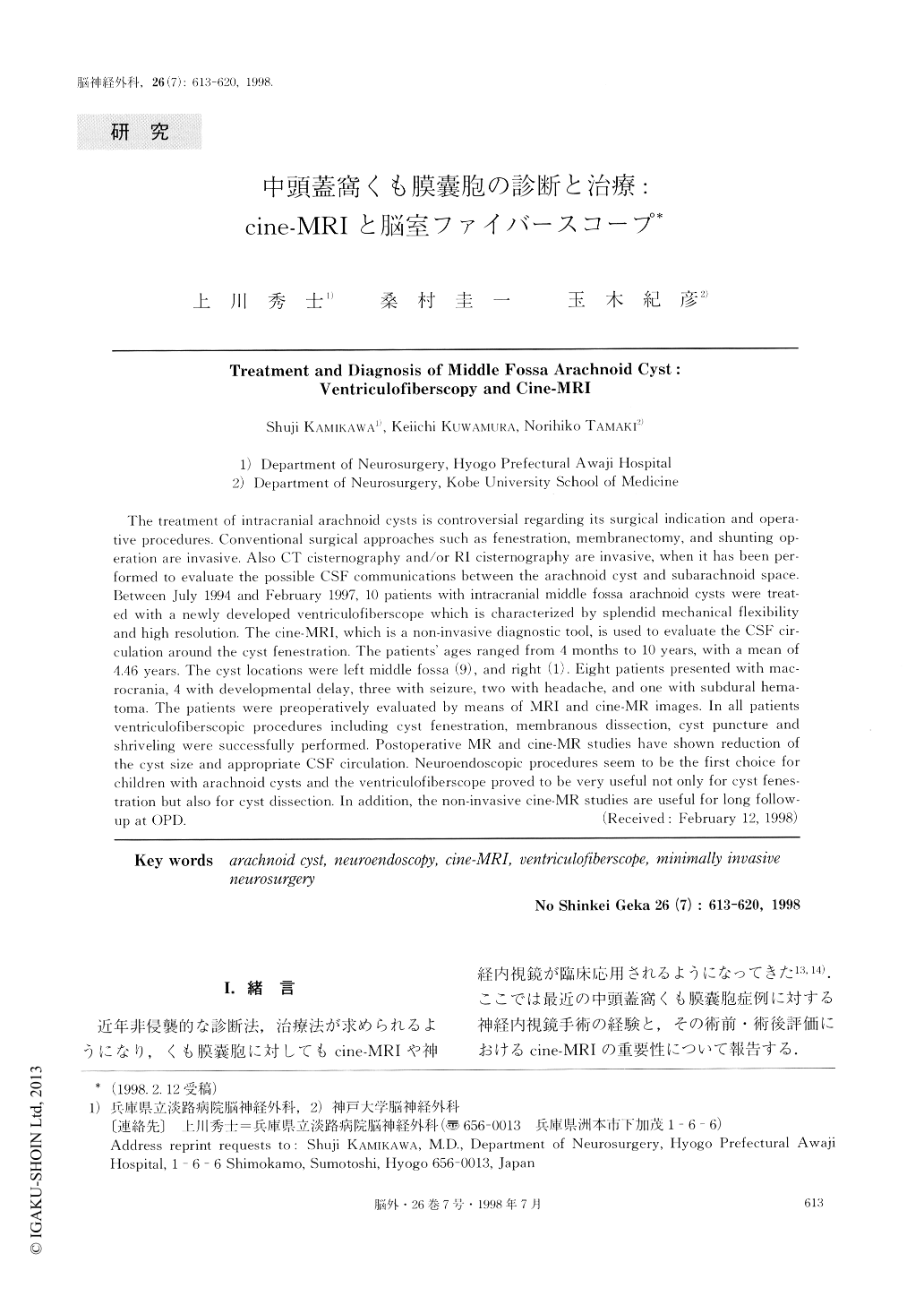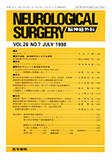Japanese
English
- 有料閲覧
- Abstract 文献概要
- 1ページ目 Look Inside
I.緒言
近年非侵襲的な診断法,治療法が求められるようになり,くも膜嚢胞に対してもcine-MRIや神経内視鏡が臨床応用されるようになってきた13,14).ここでは最近の中頭蓋窩くも膜嚢胞症例に対する神経内視鏡手術の経験と,その術前・術後評価におけるcine-MRIの重要性について報告する.
The treatment of intracranial arachnoid cysts is controversial regarding its surgical indication and opera-tive procedures. Conventional surgical approaches such as fenestration, membranectomy, and shunting op-eration are invasive. Also CT cisternography and/or RI cisternography are invasive, when it has been per-formed to evaluate the possible CSF communications between the arachnoid cyst and subarachnoid space. Between July 1994 and February 1997, 10 patients with intracranial middle fossa arachnoid cysts were treat-ed with a newly developed ventriculofiberscope which is characterized by splendid mechanical flexibilityand high resolution. The cine-MRI, which is a non-invasive diagnostic tool, is used to evaluate the CSF cir-culation around the cyst fenestration. The patients ages ranged from 4 months to 10 years, with a mean of4.46 years. The cyst locations were left middle fossa (9) , and right (1). Eight patients presented with mac-rocrania, 4 with developmental delay, three with seizure, two with headache, and one with subdural hema-toma. The patients were preoperatively evaluated by means of MRI and cine-MR images. In all patientsventriculofiberscopic procedures including cyst fenestration, membranous dissection, cyst puncture andshriveling were successfully performed. Postoperative MR and eine-MR studies have shown reduction ofthe cyst size and appropriate CSF circulation. Neuroendoscopic procedures seem to be the first choice forchildren with arachnoid cysts and the ventriculofiberscope proved to be very useful not only for cyst fenes-tration but also for cyst dissection. In addition, the non-invasive cine-MR studies are useful for long follow-up at OPD.

Copyright © 1998, Igaku-Shoin Ltd. All rights reserved.


